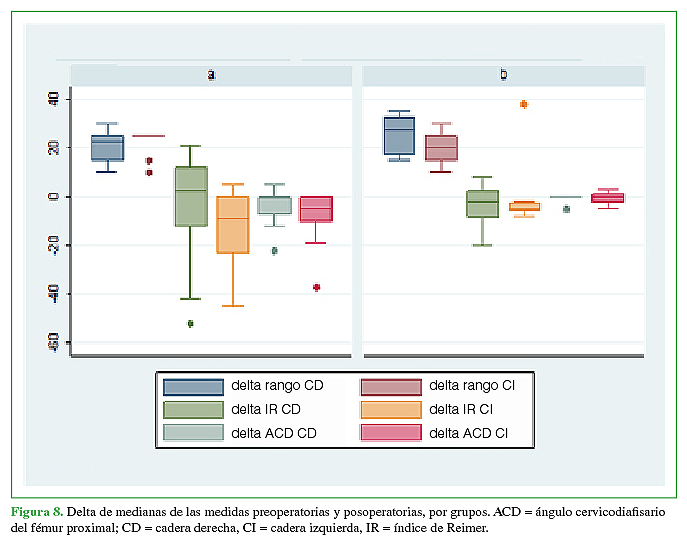Colocación de un tornillo transfisario medial en la cadera espástica de niños con parálisis cerebral. Eficacia y seguridad
Contenido principal del artículo
Resumen
Nivel de Evidencia: III
Descargas
Métricas
Detalles del artículo
La aceptación del manuscrito por parte de la revista implica la no presentación simultánea a otras revistas u órganos editoriales. La RAAOT se encuentra bajo la licencia Creative Commons 4.0. Atribución-NoComercial-CompartirIgual (http://creativecommons.org/licenses/by-nc-sa/4.0/deed.es). Se puede compartir, copiar, distribuir, alterar, transformar, generar una obra derivada, ejecutar y comunicar públicamente la obra, siempre que: a) se cite la autoría y la fuente original de su publicación (revista, editorial y URL de la obra); b) no se usen para fines comerciales; c) se mantengan los mismos términos de la licencia.
En caso de que el manuscrito sea aprobado para su próxima publicación, los autores conservan los derechos de autor y cederán a la revista los derechos de la publicación, edición, reproducción, distribución, exhibición y comunicación a nivel nacional e internacional en las diferentes bases de datos, repositorios y portales.
Se deja constancia que el referido artículo es inédito y que no está en espera de impresión en alguna otra publicación nacional o extranjera.
Por la presente, acepta/n las modificaciones que sean necesarias, sugeridas en la revisión por los pares (referato), para adaptar el trabajo al estilo y modalidad de publicación de la Revista.
Citas
2. Mandaleson A, Lee Y, Kerr C, Graham HK. Classifying cerebral palsy: are we nearly there? J Pediatr Orthop
2015;35(2):162-6. https://doi.org/10.1097/BPO.0000000000000222
3. Cooke PH, Cole WG, Carey RP. Dislocation of the hip in cerebral palsy. Natural history and predictability. J Bone
Joint Surg Br 1989;71(3):441-6. PMID: 2722938
4. Miller F, Cardoso Dias R, Dabney KW, Lipton GE, Triana M. Soft-tissue release for spastic hip subluxation in
cerebral palsy. J Pediatr Orthop 1997;17(5):571-84. https://doi.org/10.1097/00004694-199709000-00003
5. Flynn JM, Millar F. Management in hip disorders in patients with cerebral palsy. J Am Acad Orthop Surg
2002;10(3):198-209. https://doi.org/10.5435/00124635-200205000-00006
6. Andrisano A, Marchiodi L, Preitano M. Epiphyseodesis of the great trochanter. Ital J Orthop Traumatol
1986;12(2):217-22. PMID: 3793460
7. Davids JR, Valadie AL, Ferguson RL, Bray EW 3rd, Allen BL Jr. Surgical management of ankle valgus in children:
use of a transphyseal medial malleolar screw. J Pediatr Orthop 1997;17(1):3-8. PMID: 8989691
8. Stevens PM, Belle RM. Screw epiphysiodesis for ankle valgus. J Pediatr Orthop 1997;17(1):9-12. PMID: 8989692
9. Métaizeau JP, Wong-Chung J, Bertrand H, Pasquier P. Percutaneous epiphysiodesis using transphyseal screws
(PETS). J Pediatr Orthop 1998;18(3):363-9. PMID: 9600565
10. Beals RK, Shea M. Correlation of chronological age and bone age with the correction of ankle valgus by surface epiphysiodesis of the distal medial tibial physis. J Pediatr Orthop B 2005;14(6):436-8.
https://doi.org/10.1097/01202412-200511000-00009
11. Stevens PM, Novais EN. Multilevel guided growth for hip and knee varus secondary to chondrodysplasia. J Pediatr Orthop 2012;32(6):626-30. https://doi.org/10.1097/BPO.0b013e3182567a79
12. McCarthy JJ, Noonan KJ, Nemke B, Markel M. Guided growth of the proximal femur: a pilot study in the lamb
model. J Pediatr Orthop 2010;30(7):690-4. https://doi.org/10.1097/BPO.0b013e3181edef71
13. d’Heurle A, McCarthy J, Klimaski D, Stringer K. Proximal femoral growth modification: effect of screw, plate, and drill on asymmetric growth of the hip. J Pediatr Orthop 2018;38(2):100-4. https://doi.org/10.1097/BPO.0000000000000771
14. Wei-Chun Lee, Hsuan-Kai Kao, Wen-E Yang, Pei-Chi Ho, Chia-Hsieh Chang. Guided growth of the proximal femur for hip displacement in children with cerebral palsy. J Pediatr Orthop 2016;36(5):511-5.
https://doi.org/10.1097/BPO.0000000000000480
15. Torode IP, Young JL. Caput valgum associated with developmental dysplasia of the hip: management by
transphyseal screw fixation. J Child Orthop 2015;9(5):371-9. https://doi.org/10.1007/s11832-015-0681-9
16. Portinaro N, Panou A, Gagliano N, Pelillo F. D.D.S.H.: Developmental dysplasia of the spactic hip: Strategies of
management in cerebral palsy. A new suggestive algorithm. Hip Int 2009;19(Suppl 6):S69-74.
https://doi.org/10.1177/112070000901906s12
17. Portinaro N, Turati M, Cometto M, Bigoni M, Davids JR, Panou A. Guided growth of the proximal femur for the
management of hip dysplasia in children with cerebral palsy. J Pediatr Orthop 2019;39(8):e622-8.
https://doi.org/10.1097/BPO.0000000000001069
18. Carreño-Mora F, Ortiz-Corredor F, Espinosa-García E, Pérez-Hernández CE. Validación de un instrumento para
evaluar la carga del cuidador en parálisis cerebral. Rev Salud Pública (Bogota) 2015;17(4):578-88.
https://doi.org/10.15446/rsap.v17n4.35593
19. Dindo D, Demartines N, Clavien PA. Classification of surgical complications. A new proposal with evaluation in a cohort of 6336 patients and results of a survey. Ann Surg 2004;240(2):205-13.
https://doi.org/10.1097/01.sla.0000133083.54934.ae
20. Presedo A, Oh CW, Dabney KW, Miller F. Soft-tissue releases to treat spastic hip subluxation in children with
cerebral palsy. J Bone Joint Surg Am 2005;87(4):832-41. https://doi.org/10.2106/JBJS.C.01099
21. García Mata S, Duart Clemente J. Cirugía preventiva de la luxación de cadera espástica. En: Martínez Caballero
I, Abad Lara JA (eds.). Parálisis cerebral infantil. Manejo de las alteraciones músculo-esqueléticas asociadas.
Madrid: Ergon; 2016:79-92.

